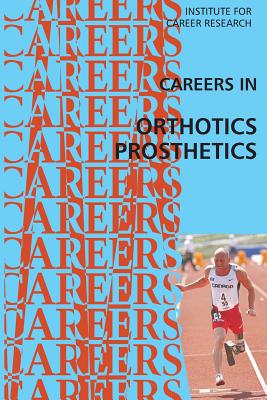
Careers in Orthotics-Prosthetics
Description
Orthotics and prosthetics is a unique component of the healthcare field that involves designing and fitting artificial limbs, braces, and other devices. Professionals in the field are often referred to as "O&P Practitioners." They work closely with people who have suffered from accidents, injuries, cancer, or other diseases, helping return them to an acceptable quality of life. Although related, orthotics and prosthetics are not the same. Orthotics involves the design and fabrication of external braces (orthoses) as part of a patient's treatment process. The orthotic device helps control weakened or deformed regions of the body including the upper and lower limbs, cranium, or spine. The most common orthotic devices are back braces and shoe inserts needed to live a more comfortable life. Orthotic intervention can be life changing - or even lifesaving - for patients with scoliosis, severe neck injuries, or cerebral palsy. Rather than supporting body parts, prosthetics involves replacing them. A prosthetist designs, creates, and fits artificial limbs on patients who are missing all or part of a limb. Creating a prosthesis requires a unique combination of art and technical skill. The prosthesis itself is much more complex than it may appear. It requires appropriate materials, alignment, design, and construction to match the functional needs of the individual that can vary greatly. Lower limb prostheses typically address stability in standing and walking, shock absorption, and aesthetics. In the case of patients who want to engage in athletic activities, the device must meet even more extraordinary functional needs. Upper limb prostheses are no less complex. You do not know how extraordinary the human hand is until you no longer are able to reach, grasp, and manipulate objects. These devices can aid in the activities of daily living such as eating, dressing, and grooming. They can also be made to address specific occupational challenges such as hammering, painting, or writing. A career in the field of prosthetics and orthotics can be very satisfying, both personally and professionally. Because of the work that orthotists and prosthetists do, patients who could not previously dance, lift everyday objects, or partake in the seemingly simple act of walking now have increased mobility and less pain. The job outlook in this field is excellent Job opportunities abound throughout the country, and the need for orthotic and prosthetic professionals is increasing rapidly. Nearly 30 percent of the current practitioners are over the age of 50 and will be entering retirement soon. As obesity, diabetes, and cardiovascular diseases continue to rise in America, there is more need than ever for people with this special skill set. Further, it is one of the few professions that can boast a 100 percent employment rate. Most people who enter the field choose to remain within it for life. As an O&P professional you can make a difference every day If you are interested in making a positive impact on people's lives, and entering a rapidly evolving unique health science career where the employment demand is exceptional, you may want to consider orthotics and prosthetics.

